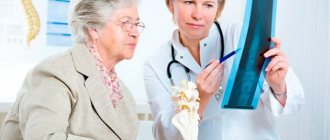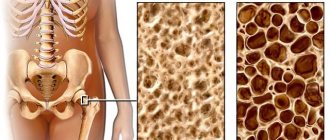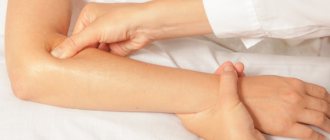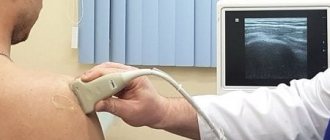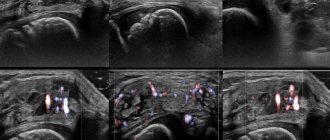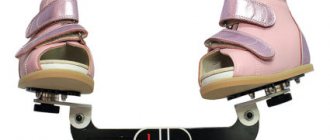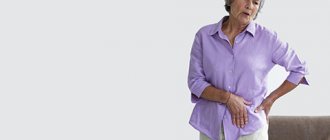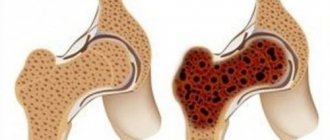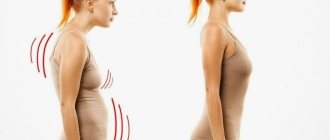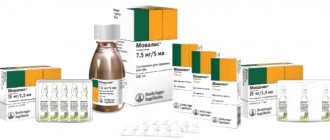Densitometry is an x-ray examination aimed at assessing bone density. This simple method allows you to diagnose osteoporosis in the early stages, when it is still possible to select its effective treatment. Our Clinic performs asynchronous CT densitometry (QCT), which is the most reliable method for determining bone mineral density (BMD). According to the official position of the International Society for Clinical Densitometry (ISCD 2019), in accordance with WHO recommendations, T-scores calculated from two-dimensional views of the proximal femur when performing asynchronous CT densitometry QCT are equivalent to the corresponding T-scores of traditional dual-energy x-ray absorptiometry (DXA) when performing diagnosis of osteoporosis. CT densitometry (QCT) has the advantage of being able to measure volumetric mineral density of trabecular bone, which is more sensitive to the characteristics of bone tissue metabolism and less dependent on the presence of degenerative changes, body mass index, etc.
Indications for densitometry
For preventive purposes, densitometry is recommended annually for all persons at high risk of osteoporosis:
- postmenopausal women;
- men over 60 years old;
- patients with endocrine pathologies (diabetes mellitus, hyperparathyroidism), rheumatological diseases or a history of frequent fractures;
- people who are underweight or overweight.
To monitor the effectiveness of the treatment, the procedure should be repeated every 2 years.
When is densitometry recommended?
Indications for densitometry are:
- age over 50 years;
- for women – the onset of menopause;
- endocrine and rheumatic diseases;
- long-term use of hormonal drugs;
- underweight;
- long history of smoking.
A fracture may be a consequence of bone tissue degradation. Therefore, in the case of a fracture, densitometry is highly desirable. Early treatment will reduce the risk of future fractures.
Research results
Densitometry determines two parameters : T and Z. The first evaluates bone density in comparison with the indicators of a healthy young person, the second - in comparison with the average indicators of a person from the patient’s age group. An elevated Z-parameter and T greater than 2.5 correspond to osteoporosis. When the T-score is in the range from -1.0 to -2.5, we speak of osteopenia (a condition in which there is a moderate risk of fractures). The lumbar spine is assessed by measured bone density in g/cm3, compared to normal values.
The Spectra clinic offers CT densitometry (QCT) of standard examination areas (lumbar spine, proximal femur). The study is carried out using modern equipment, a GE Brivo CT 385 computed tomograph, which provides minimal radiation exposure. The duration of the procedure, including interpretation of the results, does not exceed 20 minutes. For your convenience, the radiology room is open daily.
Patients are recommended to be re-examined on the device that was used for their previous examination.
How is osteodensitometry performed at the Russian State Scientific Center?
The diagnostic procedure takes place on an outpatient basis, does not require anesthesia or preparation, and lasts from 10 to 20 minutes. The patient removes metal objects (the radiologist must be notified of the presence of metal implants in the body) and lies down on the couch. You must remain still during the scan.
Immediately after the procedure, the doctor compares the results obtained with normal indicators, determines the severity of pathological changes in bone tissue and issues the patient a detailed medical report.
You can undergo diagnostics by appointment at a time convenient for you. If necessary, it is possible to obtain medical consultation and further treatment in an outpatient or inpatient setting.
Our center is located at: Moscow, 1st Leonova Street, building 16. To clarify prices for services and make an appointment, call the phone numbers listed on the website or use the online form.
Benefits of Densitometry
Innovative biphoton technology allows you to track changes in the area under study with millimeter accuracy. The highest standards of quality and reliability guarantee the accuracy of the research. The examination takes little time, so the patient does not feel any discomfort. The procedure is absolutely painless. The device allows for accurate diagnosis of the patient’s skeletal system.
The spine scan will take six minutes, the hip scan will take the same amount of time, and the forearm scan will take four minutes.
Diagnosis of the disease
If there is a fracture of the spine or limbs, the diagnosis is easy to make. But with vague symptoms, when nothing seems to bother a person, but the doctor suspects he has osteoporosis, densitometry is performed. Using this study, you can accurately determine whether a patient has osteoporosis or not.
For diagnostics, we use CHALLENGER, a mobile device that uses the essence of dual-energy X-ray technology, optimized to accurately assess the condition of the mineral elements of bones. The device allows you to diagnose osteoporosis throughout the human skeleton, scan the spine layer by layer, and also examine the hips and forearms. Optimal image quality allows you to capture every detail important for making a diagnosis.
Who needs densitometry?
- all women over 45 years of age;
- athletes;
- patients with diseases accompanied by a decrease in bone mineral density, such as rheumatoid arthritis, chronic kidney disease (nephritis) or liver disease (hepatitis);
- patients with type 1 diabetes mellitus (adolescent or insulin-dependent);
- patients with thyroid diseases accompanied by a long-term increase in hormone levels;
- patients with diseases of the parathyroid glands;
- patients with indirect clinical or radiological signs suspicious for osteoporosis;
- patients taking long-term medications that cause loss of bone mineralization.
- patients with frequent fractures.
Treatment of the disease
If you seek medical help in a timely manner, treatment has a favorable outcome. To do this, it is necessary to identify the problem at an early stage. However, if you find osteoporosis in later stages, don't be discouraged. The treatment will simply take longer. A long but effective treatment awaits you, so tune in to a positive outcome.
In the treatment of osteoporosis, both drug treatment and physiotherapeutic procedures are used. Patients are prescribed sanatorium-resort treatment and moderate physical activity. Staying in the fresh air helps cope with the problem perfectly. If such an event is not feasible in a metropolis, use a pressure chamber. In particularly severe cases, the doctor will offer you hormone replacement therapy, which is effective.
Compliance with the new nutritional principles will be mandatory. These should be foods containing calcium. Remember that without vitamin D, calcium is not absorbed and can be deposited on the walls of blood vessels, which leads to new health problems. Therefore, make sure that your diet is rich in foods containing vitamin D. You can take dietary supplements if you do not like certain foods. Eat cottage cheese, eggs, dairy products, red meat and fish.
A great way to take care of your bones is through exercise. Just use them with caution so as not to harm the body. Rehabilitation centers usually have specialists who can help you choose a set of exercises that will be most effective for osteoporosis.
Try to maintain a sleep and rest schedule, try swimming or Nordic walking, look for your type of exercise. Do not forget about the need for dosed exposure to the sun. Be less nervous and fill your life with positivity.
If your condition worsens, be sure to tell your doctor and he will adjust your treatment. Osteoporosis is not a death sentence; with this diagnosis you can live a quality life, but by taking certain precautions.
- Gallery
- News
- Reviews
- Vacancies
- Licenses
- Insurance partners
- Controlling organizations
- Schedule for receiving citizens for personal requests
- What you need to know about coronavirus infection?
- Rules for patients
- Important! Visiting a clinic during self-isolation
- Online consultation with a doctor
- to corporative clients
- Documentation
The condition of the skeletal system largely depends on the density and structure of the bones. One of the diagnostic methods that allows us to identify changes in this tissue is densitometry. The examination is carried out using X-ray or ultrasound radiation. The procedure is painless and takes little time. Ultrasound densitometry is a screening (preliminary) method for determining bone density. Ultrasound densitometry requires absolutely no special preparation.
Ultrasound densitometry
In ultrasonic densitometry, bone density is measured using ultrasound beams. This method is used to determine general bone loss and for osteoporosis in the initial stage. The procedure is carried out using a portable densitometer, which measures the speed of passage of an ultrasound wave through bone tissue. The speed indicator is recorded using a special sensor, the data from which is sent to a computer where it is processed by the system. The computer displays the processed data on the monitor. Most of these devices are designed to assess the tissue of the calcaneus in women during menopause, since it is this part of the skeleton that is most susceptible to metabolic processes. The bone density in the femoral neck and heel in women is almost the same. This examination method is most often used when there are contraindications to x-ray methods. This study is approved for repeated use in pregnant women and nursing mothers.
The main advantages of ultrasound densitometry
- Quick diagnostics (no more than 15 minutes)
- Painless
- No toxic effects on the body
Ultrasound densitometry is used as a primary (preliminary) diagnosis of osteoporosis (screening method). If osteoporosis is detected, in order to make the most accurate diagnosis, experts recommend conducting a more specific study - x-ray densitometry.
Categories of patients who need to periodically (at least once every two years) undergo screening densitometry:
- Women during menopause, especially if it occurs early
- Women who have undergone surgery to remove the ovaries (adnexectomy)
- People with diseases of the parathyroid glands
- Women over 40 and men over 60
- People leading a sedentary lifestyle
- Persons over 30 years of age whose close relatives suffered from osteoporosis
- People who have had at least one bone fracture after a minor injury
- Patients taking medications for a long time that help wash out calcium salts from bone tissue (diuretics, hormonal contraceptives, anticoagulants, glucocorticoids, psychotropic, anticonvulsants, tranquilizers and others)
- People who follow various diets, adhere to vegetarianism, are fans of therapeutic fasting, eat irrationally and unbalanced
- Persons who regularly experience intense, exhausting physical activity
- People of short stature and low body weight
- Persons who abuse alcohol or smoke
Advantages of the ultrasonic densitometry method:
- Combination of high information content with absolute harmlessness to the body
- Simplicity and efficiency of the study - the duration of one study does not exceed 15 minutes
- Availability and relatively low cost compared to other research methods (MRI, CT)
- No special patient preparation required
- Completely painless
- It has no contraindications and can be used for pregnant and lactating women, for patients undergoing radiation therapy and radiographic examinations.
The method is suitable for screening studies to identify the risk of developing osteoporosis. The harmlessness of the method and the accessibility of such a study allows it to be completed without a doctor’s referral.
Sign up for an examination by phone
Services and prices
Carrying out densitometry
1,400 rub.
Tatyana Vladimirovna Tararashkina Chief physician, obstetrician-gynecologist Work experience: 23 years
Tyan Oksana Aleksandrovna Head of department, obstetrician-gynecologist Doctor of the highest category Work experience: 25 years
Maksimova Tamara Anatolyevna Obstetrician-gynecologist Work experience: 6 years
Zabolotnova Olga Valentinovna Obstetrician-gynecologist Doctor of the first category Work experience: 24 years
Moiseeva Alla Vitalievna Obstetrician-gynecologist, ultrasound diagnostics doctor First category doctor Work experience: 36 years
Volkova Polina Dmitrievna Obstetrician-gynecologist, ultrasound diagnostics doctor Doctor of the highest category Work experience: 34 years
Postnikova Nadezhda Anatolyevna Obstetrician-gynecologist, ultrasound diagnostics doctor Work experience: 34 years
Shchelokova Elena Nikolaevna Obstetrician-gynecologist Doctor of the highest category Work experience: 37 years
Kapustina Irina Viktorovna Endocrinologist Doctor of the highest category Work experience: 32 years
Vdovina Nina Grigorievna Endocrinologist Doctor of the highest category Work experience: 49 years
Efremova Elena Georgievna Endocrinologist Doctor of the highest category Work experience: 47 years
Make an appointment
Preparing for the study
X-ray densitometry is completely painless.
The study requires virtually no special preparation. The main points that you need to pay attention to before preparing and report information to your doctor: - is there a possibility that you are pregnant;
— have you recently undergone an X-ray examination using barium mixtures, intravenous contrast for computed tomography, radioisotope scanning (metal-containing contrast agents can be retained in the body and interfere with the accuracy of measurements);
- leave jewelry at home, wear loose, comfortable clothing, without zippers, metal buttons, or belts with metal buckles, because they may interfere with the X-ray images;
- You should not take calcium medications or dietary supplements at least 24 hours before the test.
Sign up for a study
The NEARMEDIC clinic uses advanced equipment to perform examinations of people with osteoporosis. The clinic offers research in combination with a consultation with an endocrinologist who deals with such problems. The doctor will interpret the results and develop a treatment plan.
The results are given in hand, recorded on disk or printed, or stored in the clinic database for later use by specialists if you are being treated with us. Saving the results allows you to quickly compare several examinations using a software method in order to assess the degree of development of the disease or the quality of treatment. You can make an appointment with an endocrinologist or directly for an examination through the website or by phone. There are several clinics in Moscow, each of which is equipped with the necessary equipment - choose the most convenient one.
Contraindications
Since during densitometry the patient is exposed to x-rays, even in a small dose, the study is not recommended for pregnant women to eliminate the risk of negative effects on the fetus. Also, the procedure should not be performed if the patient has undergone an X-ray examination using barium contrast within 10 days before.
Carrying out densitometry can be difficult in the presence of metal implants in the skeleton, which are used in reconstructive surgery. Sometimes the examination cannot be performed in principle due to recent fractures or arthritis of the spine, since the patient is not able to take the required position on the table and hold the body in a certain position for the required time.
You can find out the price of densitometry in Moscow and sign up for an examination by filling out a special form on the website, ordering a call back or by calling +7 (495) 223-38-83.
